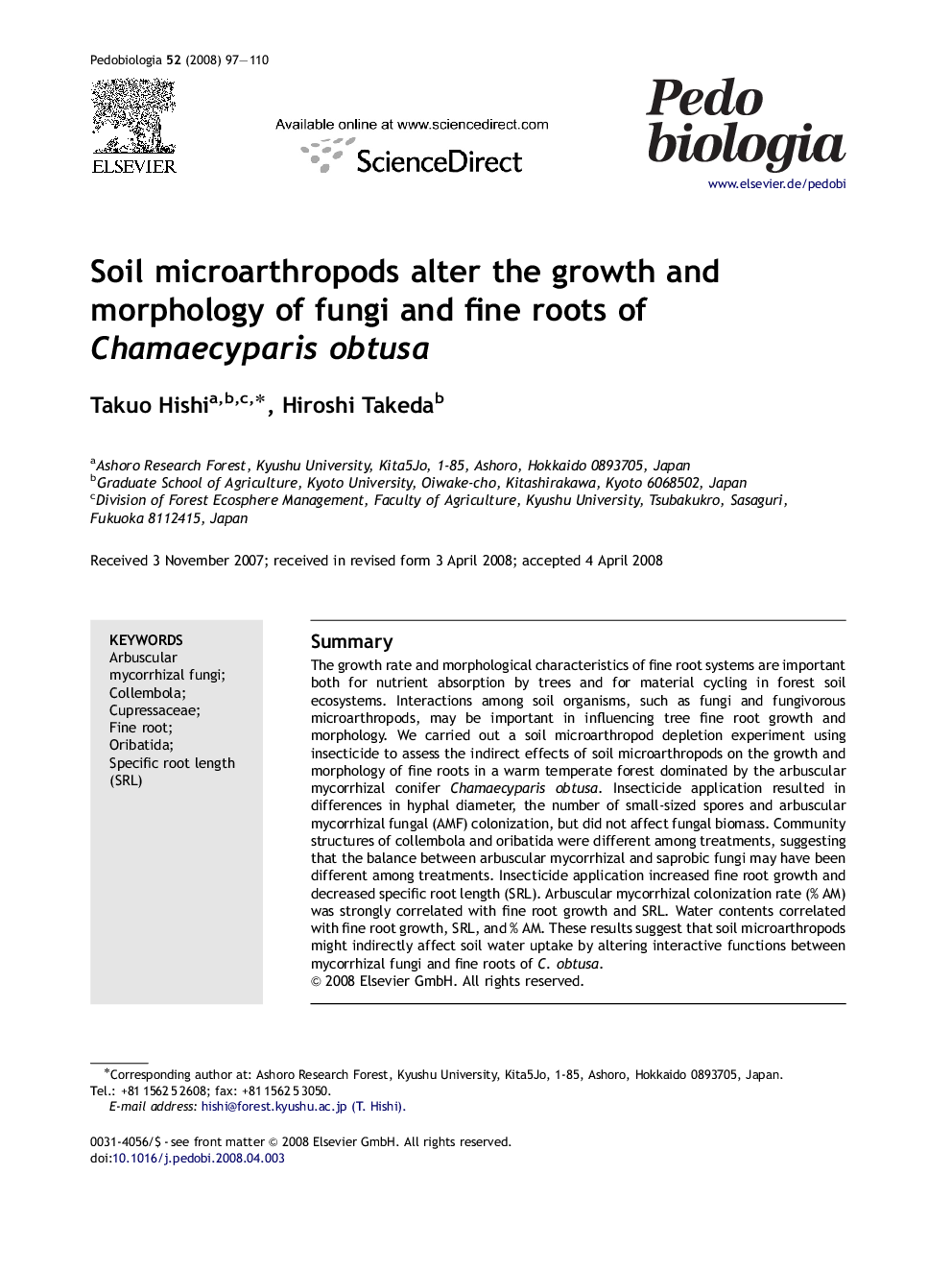| Article ID | Journal | Published Year | Pages | File Type |
|---|---|---|---|---|
| 2061222 | Pedobiologia | 2008 | 14 Pages |
SummaryThe growth rate and morphological characteristics of fine root systems are important both for nutrient absorption by trees and for material cycling in forest soil ecosystems. Interactions among soil organisms, such as fungi and fungivorous microarthropods, may be important in influencing tree fine root growth and morphology. We carried out a soil microarthropod depletion experiment using insecticide to assess the indirect effects of soil microarthropods on the growth and morphology of fine roots in a warm temperate forest dominated by the arbuscular mycorrhizal conifer Chamaecyparis obtusa. Insecticide application resulted in differences in hyphal diameter, the number of small-sized spores and arbuscular mycorrhizal fungal (AMF) colonization, but did not affect fungal biomass. Community structures of collembola and oribatida were different among treatments, suggesting that the balance between arbuscular mycorrhizal and saprobic fungi may have been different among treatments. Insecticide application increased fine root growth and decreased specific root length (SRL). Arbuscular mycorrhizal colonization rate (% AM) was strongly correlated with fine root growth and SRL. Water contents correlated with fine root growth, SRL, and % AM. These results suggest that soil microarthropods might indirectly affect soil water uptake by altering interactive functions between mycorrhizal fungi and fine roots of C. obtusa.
